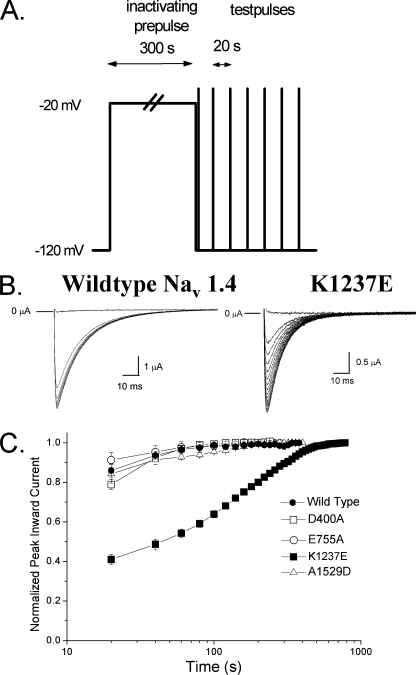FIGURE 1.
The mutation K1237E produces an inactivated state from which recovery is very slow (IUS). A, shown is a graphic representation of the voltage-clamp protocol for assessment of the time course of recovery from IUS. From a holding potential of −120 mV, the channels were inactivated by a 300-s depolarizing step to −20 mV. After return to −120 mV, recovery from inactivation was monitored by repetitive test pulses to −20 mV at 20-s intervals. B, shown are inward currents through wild type and K1237E channels elicited by test pulses after the holding potential was returned to −120 mV. Here, to allow for better resolution of the current traces, test-pulse duration was 100 ms. In both constructs the first test pulse failed to elicit inward current. With wild type channels the second test pulse resulted in almost full recovery, whereas in K1237E channels full recovery was not attained before ∼300 s had elapsed. C, shown is the effect of charge-altering mutations of K1237E and of residues at homologous positions in DI, II, and IV. Oocytes expressing currents of the constructs D400A, E755A, and A1529D were subjected to the protocol shown in A. Currents are normalized to the value after full recovery and plotted as a function of time after the conditioning prepulse. Only the mutation K1237E results in substantial ultra-slow recovery.

